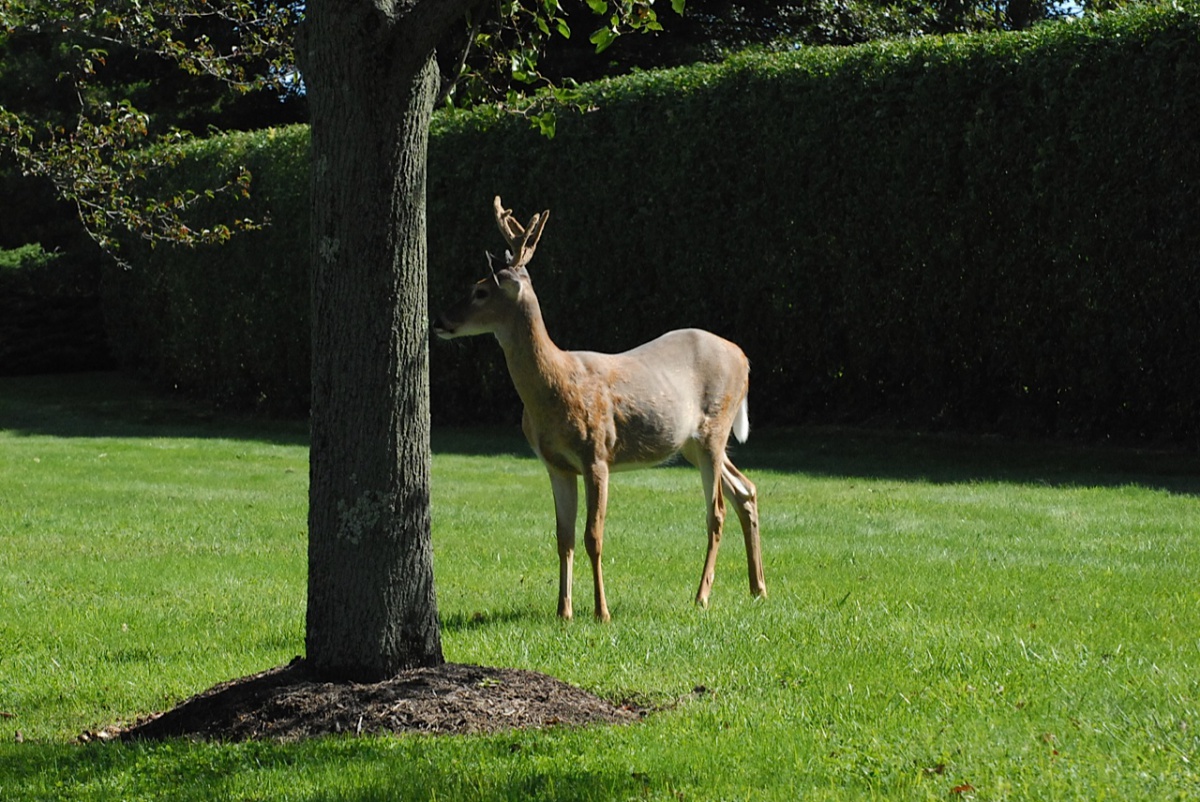View from the Garden: The Eternal Question—What Won’t Deer Eat?

I have the uprights for a 6-foot fence installed on each side of the front of my house. At some point this spring, in the midst of a round of spring cleanups, I am determined that I will finish the fence! This will fence off the backyard. It’s part of my continuing attempts to deer-proof my yard.
I live in Sag Harbor Village and so must find ways to comply with village fence regulations. In the first years we lived here, we didn’t have a deer problem. I had a beautiful hosta bed with mauve martagon lilies in it and a large rose bed. All of these beauties were given away to fortunate friends with no deer. Since then, deer have moved into most of Sag Harbor. But I want to grow vegetables, so I will begin to experiment with my deer-resistant yard this spring.
Before I’m convinced that I have been successful, I will begin with a few varieties that are supposed to be deer proof. I’m not going to prepare new beds or remove plants from existing beds. I will just tuck plants and seeds in spaces between flowers
and shrubs.
Shallots and radishes are first on the list—two favorites. Winter and summer squash and gourds are supposedly moderately resistant. I will plant the seeds of these in the beds and let the vines grow on my “assorted plant material” lawn. If the vines adversely affect the plant material, that will regrow almost immediately as it is indigenous.
For me, summer means green beans and tomatoes. I will make a space for tomatoes because deer reportedly do not eat them. I find this hard to believe. Maybe they don’t eat the leaves much, but how about the tasty fruit? Tomatoes are definitely an experiment, but are so necessary.
I might even try beans, which are on the deer favorite list. Maybe if I plant marigolds around them, and deer breach my fences, they will be deterred from my precious green beans by the scent of the marigolds…
I will continue to add herbs to the garden as I have done for years. The plants are beautiful and deer-proof. Deer don’t like smelly and/or resinous plants. I have a lot of thyme—regular, lemon and lavender. Sage is a favorite plant. I use it in flower gardens, especially with roses and always in clients’ vegetable gardens. Each year I plant parsley if only for the swallowtail butterflies that lay eggs in it. I like cilantro and basil and will try them, although they are on the moderately resistant list.
If this experiment proves successful, I will expand it next year and maybe even make a new bed for vegetables. But then there are raccoons and squirrels. I will see what they do this year.

Photo credit: Jeffrey Hamilton/Creative Vision/Thinkstock
WARNING: I recently read a recommendation in a very reputable gardening magazine to include English ivy in a garden bed. DO NOT DO THIS! In fact, do not plant ivy anywhere except in a pot. It will take over your beds, hedges, lawn (if you let it), trees, shrubbery and your house. If it climbs to the tops of your trees, it can become so heavy that it severely damages or even pulls them down. It will grow under the shingles on your house and roof and into any cracks it finds. Yes, I am trying to scare you. I know, even landscapers plant ivy as ground cover, but at some point, someone like me has to pull it out.
Jeanelle Myers is a professional gardener, landscaper and consultant. For gardening discussion you can call her at 631-434-5067. jeanellemyersfinegardening.com



